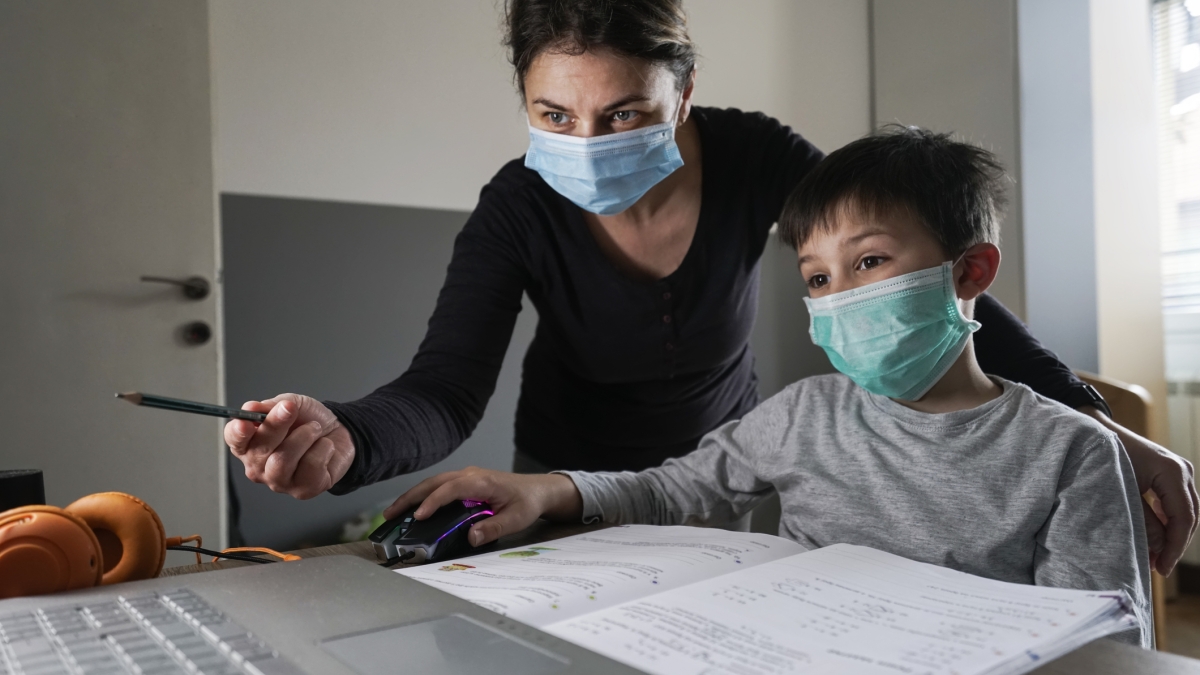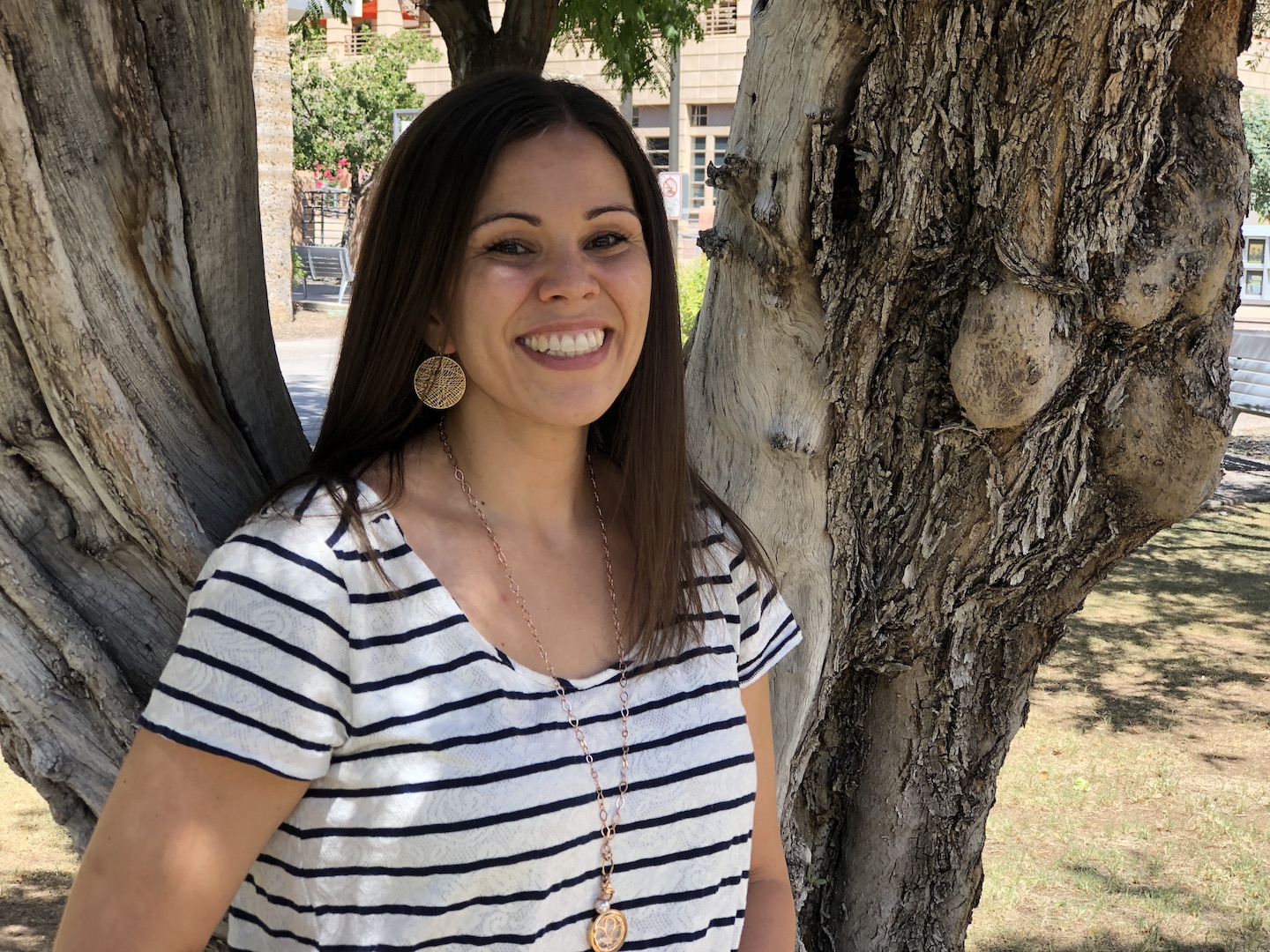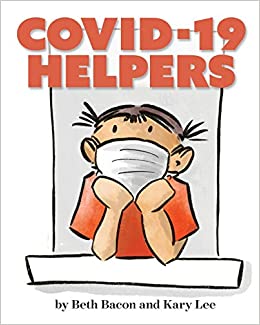Classes this fall will see only half of their teacher’s face.
That’s one of the new faces of learning, according to an Arizona State University educator who teaches preschool-age children.
“COVID-19 meant many changes for students this past year, including not seeing their teachers and peers on a Monday through Friday basis,” said Courtney Romley, the director of ASU’s Child Development Laboratory within the T. Denny Sanford School of Social and Family Dynamics. “When they return to the classroom, there will be many more changes. Interacting with and receiving support from a teacher wearing a face covering will be one of the most significant.”
That might not sound like a big deal, but there are many nuances to this scenario, Romley said. Not seeing a full facial expression, failing to pick up a social cue or hearing a muffled voice can hinder learning and at times cause distress for these students, whose ages range from 2 to 5.
“When students can’t see your nose or mouth, it’s harder for them to understand, ‘Is this their happy voice? Or is this their sad voice?’” Romley said. “It’s something they’re not used to and it’s our responsibility to find developmentally appropriate ways to help them adapt and find some comfort in the changes.”
To prepare for this change, Romley and the Child Development Laboratory staff are developing activities and games that will be taught currently through Zoom and in person when the lab reopens.
Courtney Romley
One such activity is referred to as the "Mask Game." For this game, Romley had the children and teachers bring their masks to the Zoom chat. Twelve emojis had been selected with varying emotions. The emojis were on slides and had masks covering everything but their eyes. Children put on their masks and discussed what facial expressions they thought they would find under the emoji’s mask. Each child made the expression under their own mask and on the count of three, everyone removed their masks, including the emoji, and compared the results. This gave children the opportunity to not only see their teachers in masks, but also discuss the visual cues they look for when reading someone’s expression; noting that when only the eyes are seen, it can be difficult to decipher the nuances in certain emotions.
Romley is also using a children’s online book written by Beth Bacon and Kary Lee called “COVID-19 Helpers,” to help push the message to her students.
The book illustrates how in spring 2020, the pandemic hit and impacted everyday life in the United States and abroad. It also teaches them the concept of social distancing, stay-at-home orders and how the virus spreads, stressing the importance of wearing a mask.
That’s a concept Kimberlee Swisher’s 5-year-old son, Eero, who attends the Child Development Lab, already knows.
“We’ve certainly talked a lot about masks and he knows to wear his when he’s going out in public,” said Swisher, who is a lecturer in the School of Arts, Media and Engineering in the Herberger Institute for Design and the Arts. “He knows there’s something called the coronavirus that makes some people really sick, but not others.”
Eero’s classmate, Avery Cordes, also knows the severity of COVID-19.
“It’s not good and a lot of people are dying from it,” said Cordes, who is also 5. “I wear a mask when I’m super close to people.”
"COVID-19 Helpers"
His twin brother, Ethan, doesn’t have a problem with masks because his features a superhero. However, he does have strong opinions on mask wearing.
“I don’t like it when other people don’t wear a mask,” Ethan said. “But I don’t like that my teacher will have to wear one.”
Their mother, Colleen Cordes, said the pandemic has put a strain on her two sons’ lives but appreciated that Romley let parents know that she would be addressing the subject in class.
“I’m a psychologist so anything that focuses on helping kids identify emotions in other people, I can identify with,” Cordes said. “For her (Romley) to come up with an activity dealing with this was helpful and instructive.”
Despite the gloomy nature of COVID-19 and the impacts it will have on the classroom this year, there can be some positive outcomes, said Laura Guerrero, a professor in ASU's Hugh Downs School of Human Communication.
“Because the teacher’s face will be covered, students will be looking for emotional cues from the face,” said Guerrero, who studies communication in close relationships, with emphases on emotional and nonverbal communication. “There are nonverbal cues they can look for and that will develop.”
Guerrero said kids that young have a good instinct for nonverbal communication and are adaptable. She said teachers can also develop hand gestures and project emotions and tone to help students along.
“Educators now have an opportunity to teach the kids new codes that build a community,” Guerrero said. “It could be holding up a color sign for social distancing or having dots on the floor that can help give them structure. The students will have to learn to adapt and the teacher will have to modify.”
Romley believes that as well.
“Young children’s response to change often mirrors the input they receive from their trusted caregivers,” Romley said. “Having responsive, attuned teacher-caregivers, who are honest about the changes due to COVID-19 and provide opportunities for children to dialogue, will help children through the changes. Although this is no small task, this is what is provided to ensure the CDLChild Development Lab remains a place of comfort, safety, and learning for young children.”
Top photo courtesty of iStock/Getty Images.
More Health and medicine

Bird flu: Your questions on symptoms, spread and safety answered
Bird flu is no longer only “for the birds.”Infections have expanded beyond wild birds and poultry to a range of animals — from mice to mountain lions, dairy cows to domestic cats, and polar bears to…

Making medicine side-effect free
Many drugs that address medical conditions can come with serious side effects. In drug commercials, the litany of potential side effects is often longer than the benefits being touted. Carl…

Diagnostic research happening at ASU focused on detecting diseases earlier to save lives
It was one of America’s founding fathers, Benjamin Franklin, who may have foreshadowed today’s health care innovation when he quipped the adage: An ounce of prevention is worth a pound of cure.In…




